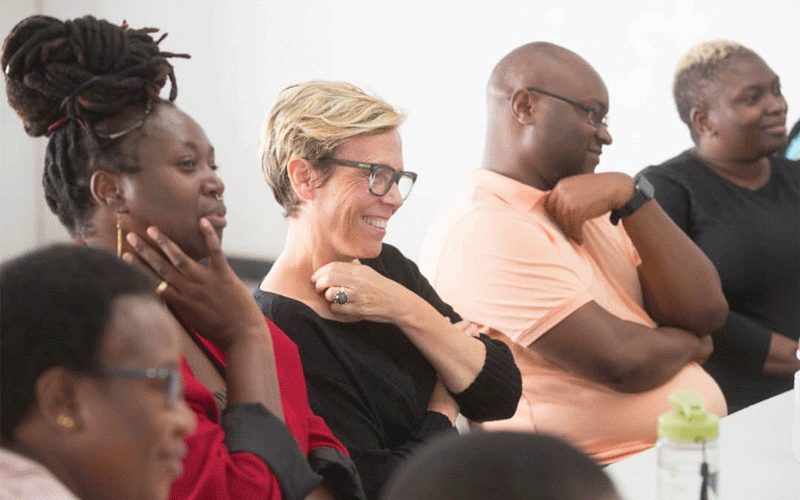
Storytelling, a powerful and age-old method of communication, has recently emerged as a valuable tool in research dissemination as it helps to bridge the gap between scientific findings and public understanding.
The use of narrative techniques in research communication offers a unique way to make complex data more accessible, relatable, and impactful, allowing researchers to connect with broader audiences in a way that raw data and technical language often fail to do.
Narrative art can humanise research findings by framing them within stories that reflect the lived experiences of people or the real-world applications of the research itself.
For example, in social science and public health, storytelling can transform statistics and theories into real, relatable stories showing the ways in which these findings affect individuals, communities, or society as a whole.
This approach not only makes the findings more compelling, but also builds empathy and engagement, as audiences are more likely to remember and reflect on information presented through a narrative lens.
Moreover, storytelling can improve knowledge retention, as stories tend to be more memorable than facts alone.
When audiences engage with research findings through a story, they are more likely to remember the core message and feel personally connected to it.
By crafting a storyline around research — whether it’s following the journey of a character impacted by the research topic or illustrating a problem-and-solution scenario researchers can embed critical insights within an emotionally engaging context.
- Out & about: Willmore plays up The Sparrows
- Out & about: Dumisani echoes African tales
- Out & about: Willmore plays up The Sparrows
- Out & about: Dumisani echoes African tales
Keep Reading
Narrative art also plays a critical role in influencing behaviour and shaping public opinion.
By framing scientific findings in stories that resonate with people’s values and experiences, researchers can encourage shifts in attitudes and actions
For instance, a story about the impacts of climate change on a particular community can make the issue feel closer to home, fostering a sense of urgency and responsibility that might not be achieved through data alone.
Similarly, stories about health or educational interventions can empower audiences to take proactive steps or advocate for policy changes.
To effectively use storytelling in research dissemination, researchers can draw from creative techniques such as character development, plot structure, and descriptive language.
They can craft stories that highlight the implications of the findings, focusing on relatable challenges, moments of discovery, or transformation.
Additionally, multimedia storytelling using visuals, audio, and digital platforms can enhance the impact of research storytelling, reaching diverse audiences through a blend of narrative and sensory experience.
Storytelling is a profoundly important artistic tool that connects research to real-life contexts, especially in Zimbabwe, where oral traditions and narrative art forms have long played a role in preserving culture, educating communities, and mobilising people toward action.
By incorporating storytelling into the research dissemination process, findings become more accessible, memorable, and impactful, transforming abstract data into relatable experiences that resonate deeply with audiences.
In Zimbabwe, storytelling can make complex research findings more engaging, which is crucial for capturing the attention of diverse audiences, from policymakers to rural community members.
For instance, instead of solely presenting statistics on the mental health impacts of substance abuse, a story that follows a young person's struggles and recovery journey allows the audience to understand the human side of the issue.
Through a narrative lens, audiences are more likely to connect emotionally with the research, fostering empathy and a deeper understanding of the topic.
Storytelling also allows researchers to infuse cultural relevance into their work
In Zimbabwe, where oral traditions such as ngano (folktales) have been used for generations to convey wisdom and values, incorporating storytelling into research bridges the gap between modern issues and traditional practices.
For instance, environmental research findings can be relayed through stories about local farmers facing drought due to climate change.
By contextualising scientific information within a familiar narrative format, storytelling becomes a means of honouring and preserving cultural identity while addressing contemporary challenges.
As an artistic tool, storytelling has the unique power to inspire and mobilise communities.
In Zimbabwean society, community gatherings and oral storytelling are still prominent means of sharing important information.
By telling stories of social issues like gender equality through the journey of a young woman overcoming early marriage researchers can prompt discussions within communities, catalysing change at the grassroots level.
This approach encourages communities not only to empathise but also to feel empowered to take actionable steps, fostering a sense of collective responsibility.
Storytelling humanises research, bridging the gap between researchers and the public.
This is particularly important in Zimbabwe, where research can sometimes be perceived as disconnected from the realities of daily life.
By using stories to convey findings, researchers create a rapport with their audience, helping them see how the research directly impacts their lives.
For example, a narrative on the economic resilience of informal market vendors can bring findings about poverty alleviation strategies to life, making the research more relatable and actionable for community members.
Storytelling allows researchers to present information in a way that respects Zimbabwe's oral heritage while preserving knowledge for future generations.
In fields such as cultural preservation and indigenous knowledge systems, stories ensure that valuable insights are passed down effectively.
A project documenting traditional agricultural practices through the lens of an elder’s life story, for instance, not only preserves these practices but also reinforces their value to younger generations, who may otherwise lose touch with their heritage.
In essence, storytelling is more than a means of communication it is a powerful artistic tool that amplifies research's impact.
By transforming findings into narratives, researchers in Zimbabwe can honour local traditions, foster social cohesion, and inspire real-world changes, ultimately ensuring that research serves the communities it aims to support.
*Raymond Millagre Langa is a musician, poet, orator, independent researcher and founder of Indebo edutainment Trust. You can follow on Facebook @Millagre Ray Langa, on X you can follow on #Millagre Langa, email - millagrepapito@gmail.com or indebotrust@gmail.com.










